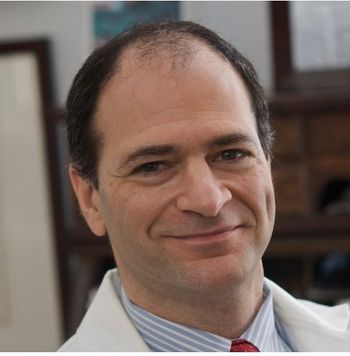
STUDY: Infants Hospitalized for RSV with LRTI Face Increased Symptoms and Lung Function Abnormalities by Age 2
Children hospitalized for RSV with LRTI during infancy have increased symptoms and lung function abnormalities, including increased resistance and decreased compliance.
Infants hospitalized for respiratory syncytial virus (RSV) with lower respiratory tract infection (LRTI) have increased symptoms and lung function abnormalities up until at least 2 years of age, according to new research published in BMJ Open Respiratory Research.
In a study of children hospitalized for
RSV is the most common cause of hospitalization for LRTI in
“We undertook a descriptive, observational case–control study to describe the clinical and pulmonary function sequelae through to 2 years of age, in infants who were hospitalized for RSV LRTI in infancy and matched controls,” wrote researchers.
The study was conducted at a secondary-tertiary-level hospital in Johannesburg, South Africa, from April 1, 2016, to December 31, 2019. Researchers included infants hospitalized for severe or very severe RSV LRTI (defined as “cases”) and a control group of healthy term infants not hospitalized with an LRTI in the first year of life. The control group was matched 1:1 with cases for sex and chronological age at the time of pulmonary function testing, according to the study.
Investigators administered a questionnaire detailing environmental and medical history, along with a modified International Study of Asthma and Allergies questionnaire. Also, pulmonary function testing—including oscillometry, tidal breath flow-volume loops, and multiple breath wash-out—was performed at 1 and 2 years of age.
FINDINGS
Researchers identified 964 hospitalized RSV cases (ie, infants hospitalized with RSV LRTI). There were 308 1-year-old (57% boys, median age 12.4 months) and 214 2-year-old (54% boys, median age 24.6 months) cases for study inclusion. The matched control group included 292 infants aged 1 year (53% boys; median age 12.5 months) and 209 infants aged 2 years (46% boys; median age 23.9 months).
By 1 year of age, infants in the cases group compared with the control group had increased odds of wheezing or whistling in the chest (adjusted odds ratio [aOR], 2.78, 95% CI 1.75-4.44), hospitalization for wheezing or whistling in the chest (aOR, 5.66, 95% CI 3.17-10.09), or for any LRTI (aOR, 10.43, 95% CI 4.39-24.77), and of receiving treatment for wheezing or whistling in the chest (aOR, 3.05, 95% CI, 1.70-5.47).
In addition, cases compared with controls were more likely to have reported sleep disturbance due to wheezing or whistling in the chest (aOR 8.36, 95% CI 5.42-12.90) and to have a dry cough at night (aOR 4.37, 95% CI 3.02-6.33) by age 1.
Between 1 and 2 years of age, cases remained more likely to experience wheezing or whistling in the chest (aOR 8.11, 95% CI 5.04-13.04), to be hospitalized for wheezing or whistling in the chest (aOR 58.08, 95% CI 17.98-187.59) or an LRTI (aOR 33.89, 95% CI 10.35-110.96), and to have received treatment for wheezing or whistling in the chest (aOR 21.11, 95% CI 10.76-41.45), according to the results.
Also, cases remained more likely to experience sleep disturbance due to wheezing or whistling in the chest (aOR 21.63, 95% CI 12.47-37.59), a dry cough at night (aOR 8.37, 95% CI 5.3-13.06), and experience wheezing or whistling in the chest during activity (aOR 14.21, 95% CI 7.46-27.08) by age 1.
For respiratory oscillometry, the Rmean was similar between cases and controls at 1 year of age (26.34 vs 26.32 hPa.s/l1; P=.976), although it was higher in cases by 2 years of age (22.46 vs 20.76 hPa.s/l1; P=.022), according to researchers. Additionally, among infants in the cases arm, the Xmean was more negative compared with those in the control arm at 1 year (-4.61 vs -3.09 hPa.s/l; P<.001) and 2 years (-0.99 vs 0.33 hPa.s/l; P<.001).
Investigators observed that the total breath time was decreased in cases compared with controls (2.12 vs 2.24 s; P<.001), with the inspiratory (0.98 vs 1.01 s; P=.013) and expiratory (1.15 vs 1.23 s; P<.001) times lower at age 1 year. “These changes were not significant at two years of age,” noted authors.
“These findings highlight that despite the relatively low RSV LRTI associated mortality in this setting, RSV hospitalization is associated with long-term morbidity, and an urgent need for RSV preventative strategies, including maternal RSV vaccination or prophylactic monoclonal antibodies,” wrote researchers.
One limitation of the current study was the fact that only 1- and 2-year-old children in South Africa with severe or very severe RSV-associated LRTI were included, so the results are not generalizable to all populations and ages, or to children with mild LRTI. Additional limitations include the possibility that controls may have had an LRTI, but their parents did not seek medical attention; reliance on caregiver recall for reporting clinical sequelae, which may have led to under- or over-reporting of symptoms; and the lack of baseline pulmonary function tests performed prior to RSV-associated hospitalization.
“Further research is needed to better delineate the long-term effects of RSV LRTI on the developing lung as well as research describing contributory factors, such as genetic, environmental, and socioeconomic, and the impact on lung function trajectories,” concluded authors.
Reference: Verwey C, Ramocha L, Laubscher M, et al.
Newsletter
Enhance your clinical practice with the Patient Care newsletter, offering the latest evidence-based guidelines, diagnostic insights, and treatment strategies for primary care physicians.

































































































































































































































































































